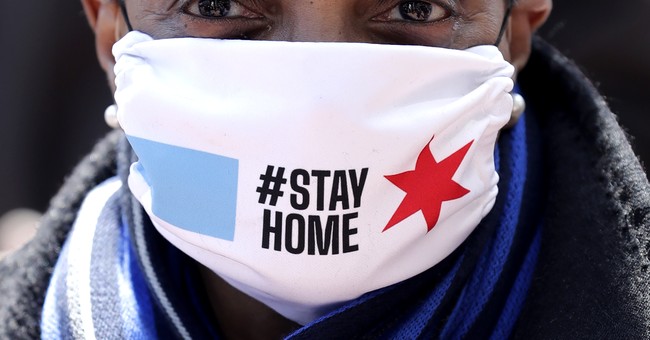
Source: AP Photo/Nam Y. Huh
The world has been engulfed in COVID panic ****. Hundreds of thousands will die, and health care systems will be overrun. In the US, the death toll was projected to hit 2.2 million. Now, in some places, yes—the systems reached a breaking point, especially in Italy. Yet, most of the projections were, let’s say, way off. We can thank the Imperial College London for setting off the lockdown frenzy that spread as fast as COVID itself. The study is what led to the lockdown fever, as it noted this was the only way to stop the spread. Well, we know the study was trash. And a big part of their calculation was apparently six flights from Wuhan, where out of 689 people, only six tested positive for COVID. Are you ready to be even more infuriated about the COVID lockdowns? Well, read this lengthy thread from Graham Neary who detailed how this study came up with its infection rate. It’s not pretty.
“Taking the age of the Chinese people into account, this study estimated that the infection fatality rate in China was 0.66% (and was probably between 0.39% and 1.33%),” Neary wrote. “Covid-19 was ‘a major global health threat’ that would overwhelm ‘even the most advanced healthcare systems.’”
He elaborates further:
But how did they calculate this?
They had a number for how many people died of Covid-19 in China (mostly Wuhan) as of Feb 11th (1,023 deaths).
That's the numerator in the IFR calculation.
What they needed was an estimate for the total number of people had who been infected.
That sounds like something it would be very difficult to estimate, since you don't know how many people with the virus are asymptomatic or haven't been tested.
They came up with a solution for Wuhan: count how many people escaping the city by plane tested positive for the virus.
This clever idea gave them an estimate for the prevalence of Covid-19 in Wuhan.
To match up with the timing of the death data, they used passenger test results from flights that took place over two days in late Jan/early Feb.
How many flights, you might ask?
Six.
Graham Neary@GrahamNearyLet me tell you a story. It's about six passenger flights from Wuhan that led to an unprecedented global disaster. These six flights help to explain why the entire world was gripped by fear, with consequences that we'll be living with for many years to come. Thread.Replying to @GrahamNearyIn 2020, the world became convinced that a deadly coronavirus was plaguing the human race. A virus that could kill nearly 1 out of every 100 people it infected, or so we were told. Come with me, and I'll show you where that belief came from.Graham Neary@GrahamNearyRemember that in March, Neil Ferguson of Imperial College London predicted 510,000 Covid-19 deaths in Britain and 2.2 million Covid-19 deaths in the US. Healthcare systems would be overwhelmed. This could only be avoided by "non-pharmaceutical interventions" (lockdown, etc.)Replying to @GrahamNearyAs an influential member of SAGE, Ferguson's predictions were crucial in triggering the UK government into imposing lockdown. In early May, Boris Johnson insisted it was a "fact" that half a million lives were saved by lockdown, compared to the "reasonable worst case scenario".Graham Neary@GrahamNearyAt the heart of Ferguson's predictions was the estimate that Covid-19 could kill 0.9% of the British people it infected, and could infect up to 80% of the population. The source for this belief was "an analysis of a subset of casesfrom China". Let's go down the rabbit hole...SEE THE WHOLE TRUTH



